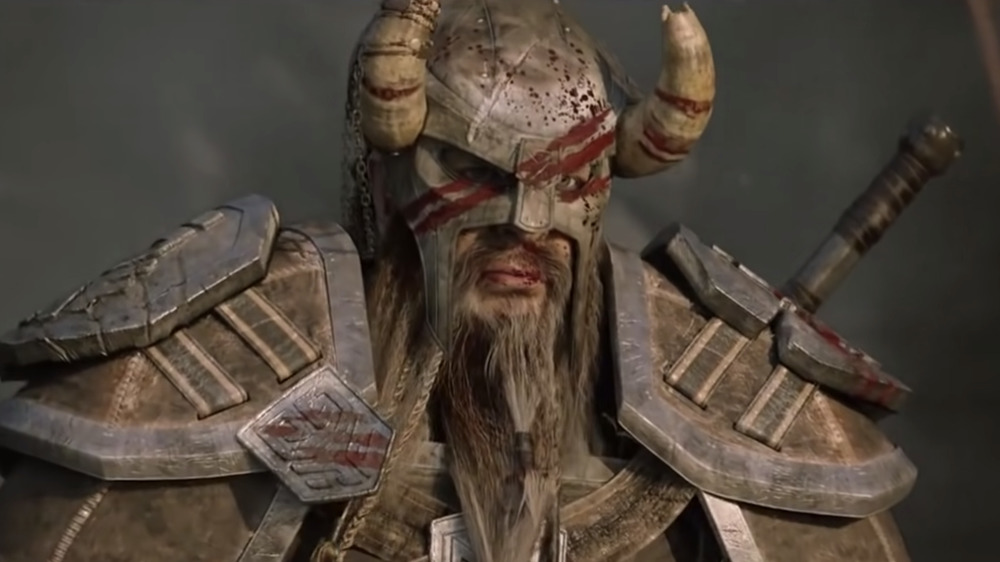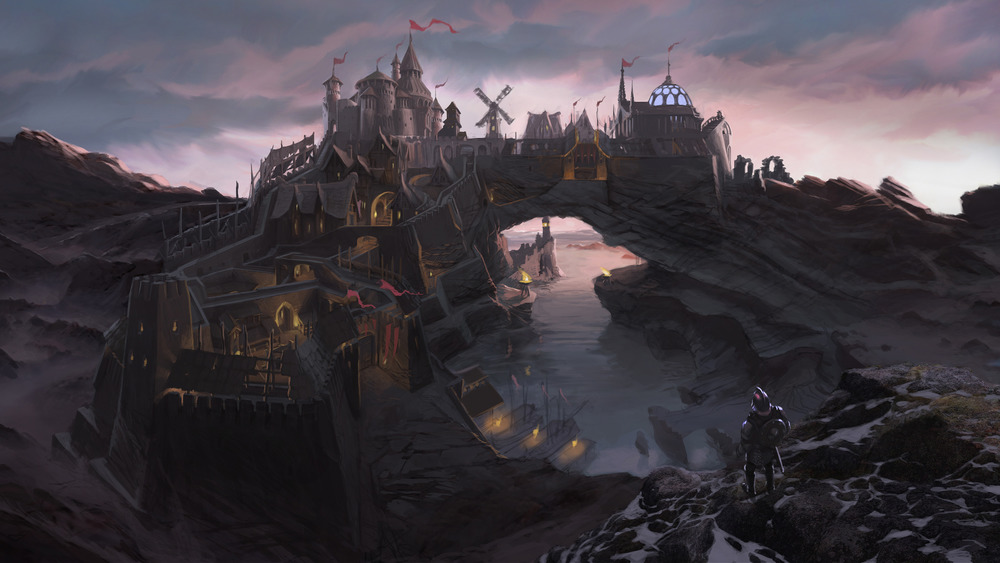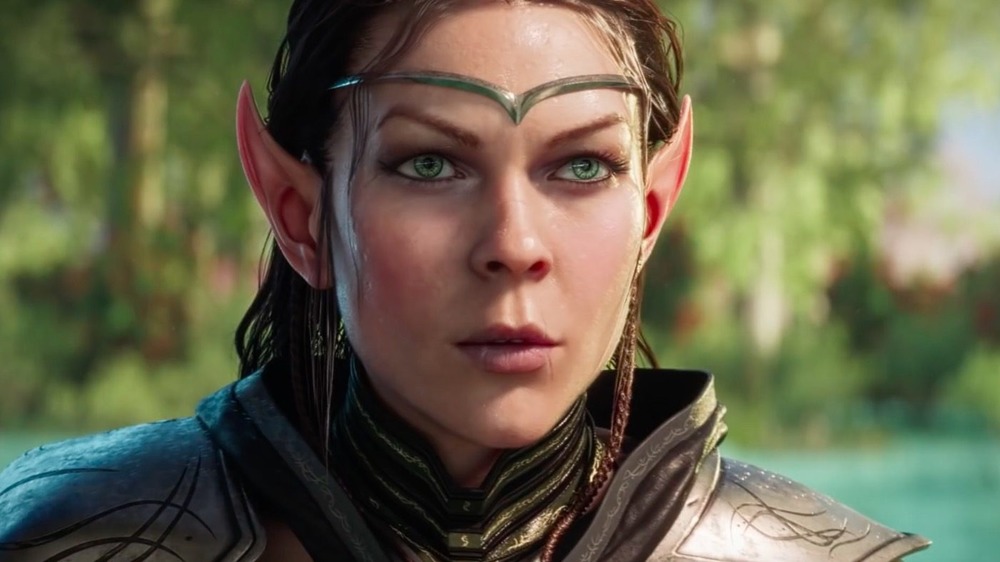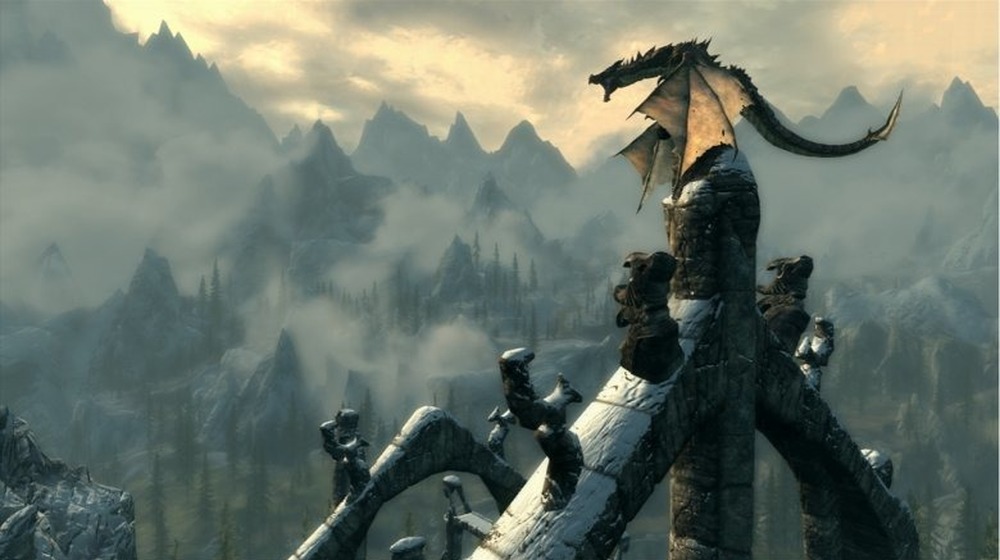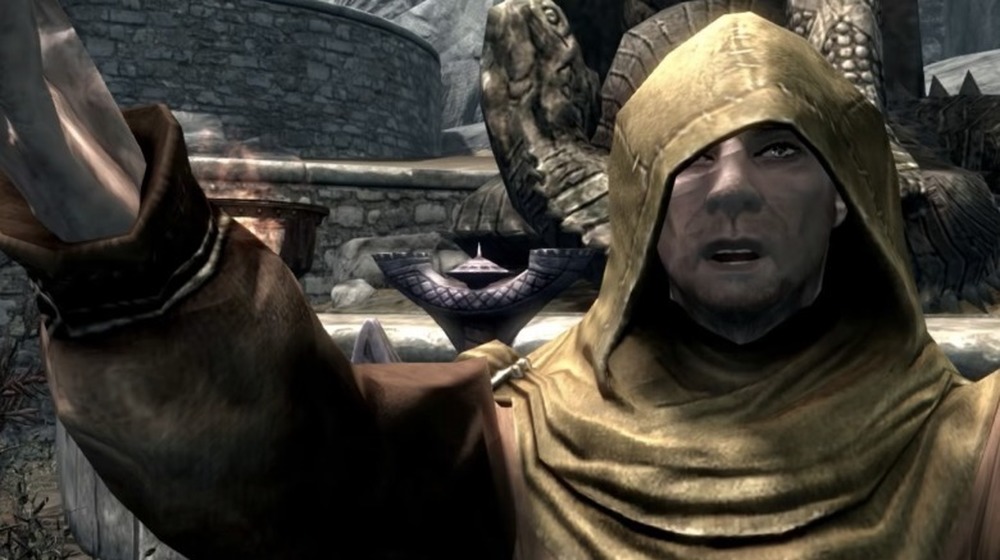The Untold Truth Of The Elder Scrolls' Nords
Whether they're belting out a song in the town inns across Skyrim or a battle cry in the heat of battle, the Nords might best be characterized by their intense passions, deep spiritualism, fierce independence, and warrior culture. "Thy race is strong as the northern winds which sweep through icy glaciers. The arctic clime hast hardened thy folk for life's cruel and bitter hand." So sayeth the introduction to the Nordic race in Bethesda's first entry to the its popular fantasy franchise in 1994's Elder Scrolls: Arena.
Though they closely resemble the other human races — and have much in common with the actual Nordic people of Northern Europe — the Nords see themselves as inherently different from any other human faction in Tamriel, and for good reason. Beginning with their migration to Tamriel in the Merethic Era, the Elder Scrolls' history of the Nords is rich, filled with battles, and endlessly fascinating.
The Nords' first settlements weren't in Skyrim
"When Kyne, the warrior widow of Shor, the goddess of the storm, exhaled upon the tremendous heights of the Throat of the World, her beatific breath susurrated through the coniferous forests and warmed the snows which blanketed the north," the Elder Scrolls scholars at FudgeMuppet tell us. "Her divine draft filled the land with life, and so the Nords were born."
Despite it being the birthplace of the Nords and their homeland, Skyrim wasn't the Nords' first choice for long-term settlement. The Nordic way of life actually originates on the frozen continent of Atmora, FudgeMuppet says, located across the northern Sea of Ghosts.
Comparatively little is known about Atmora except that it was once more a more hospitable continent whose Merethic Era humans would occasionally invade Tamriel, becoming some of the continent's Nedic people, according to the Imperial Geographic Society. It was in the late Merethic Era when the famous Atmoran warrior and creator of the Nordic language, Ysgramor, brought his people to Skyrim en masse. Thus, the settlement in Skyrim is described by FudgeMuppet as a "homecoming."
The Nords' distrust of the elves goes back millennia
The Nords' rivalry with the elves goes back to the Merethic Era, when the tall, fair-skinned, and hardy people might still have been considered Atmoran immigrants in Skyrim. Before they were the dominant force on Skyrim, though, there were two other races: the dragons, who they worshipped, and the Falmer, or "snow elves."
Fearing further encroachment, the Falmer launched an attack on the new inhabitants on their land, remembered as the Night of Tears, and set in motion the eons of hostility between the two peoples. But a more likely reason, FudgeMuppet says, is that the Falmer "heard rumors of an ancient and powerful artifact, presumed to be the Eye of Magnus" that the Nords possessed and that the Falmer wanted. The Nords hit back with a nearly genocidal vengeance, pushing the Falmer into the caves, where they became twisted shadows of their former selves.
Though the details are sparse, FudgeMuppet speculates of a war between the proto-Nords and elves on Atmora before all of this, which may have resulted in the continent's "freezing" and the eventual human migration to Skyrim.
The dragonborn wasn't always the protagonist
After successfully driving off the Falmer in the Merethic Era, the Nords would then have to face their powerful dragon overlords to become the dominant species in Skyrim in an event known as the Dragon War. At first, the Nords worshipped them. The dragons, arrogant, powerful, and disinterested in their subjects, granted some of their powers to a religious class. Among these dragon priests was a Nord named Miraak, the first dragonborn.
Egotistical and hungry for power, Miraak betrayed his dragon higher-ups and instead pledged his service to the Daedric prince of knowledge, eventually learning to bend the will of dragons to his own, according to FudgeMuppet's retelling. The Nords sought Miraak's help in the Dragon War, but Miraak declined.
With the help of the dragon Paarthurnax, the Nords were able to learn the dragon language and overthrow the dragon priests and the dragons themselves, according to texts in the Imperial Library. Miraak was banished into Oblivion, but the undead dragon priests and their draugr can still be encountered in the ruins of the dragon shrines in the Fourth Era.
The Nordic rebellion in Skyrim may have been manufactured
If you've played Skyrim for more than a few minutes, you're probably familiar with Heimskr, the Nordic Whiterun preacher with the dramatic street sermons praising the hero-god of mankind, "Talos the mighty! Talos the unerring! Talos the unassailable!" If you can weather Heimskr's raving without unleashing the thu'um, you might discern that he's a little irritated by a new rule that outlaws the worship of Talos.
The new rule, however, is likely more than just petty vengeance against the memory of Emperor Tiber Septim (aka Talos) after his conquest over the elves in the Third Era. According to the Imperial Library, one strong possibility is that the Aldmeri Dominion established the rule after the Great War, knowing that it would fracture the humans. This worked in Skyrim, if the book "Nords Arise" is any evidence. (Propaganda like "The Talos Mistake" didn't help, either.)
According to the Imperial Library's Michael Kirkbride, the ultimate goal of the Thalmor is to destroy Talos and all humans in an effort to "reach heaven." Once the memory of the humans has been erased, the Thalmor believe they will "regain the mantle of the imperishable spirit."

